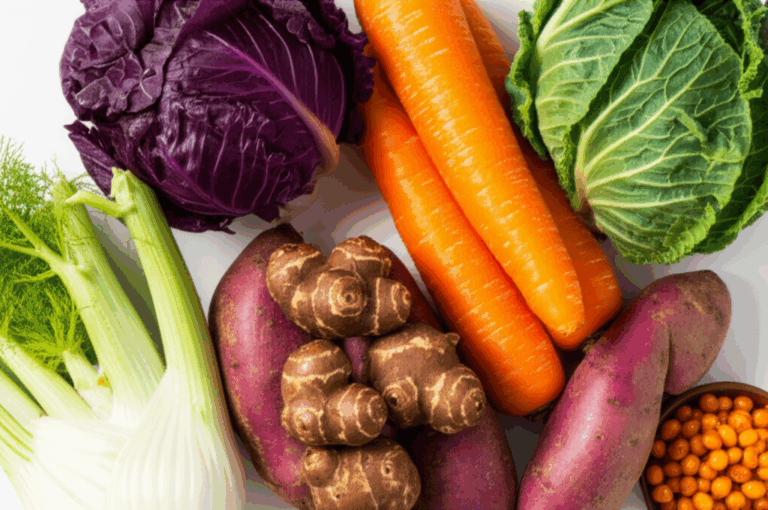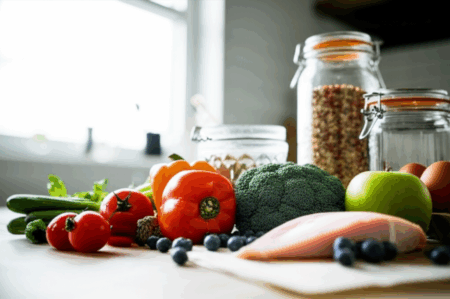In a world saturated with superfood trends and celebrity diets, it’s easy to overlook the quiet powerhouses lurking in your local grocery store. Many highly nutritious foods often get sidelined in favor of more publicized options, despite offering incredible health benefits, versatility, and often, better affordability. Diversifying your diet with these hidden gems can significantly boost your nutrient intake, support overall wellness, and even add exciting new flavors to your culinary repertoire.
It’s time to shine a spotlight on some of these unsung heroes. From ancient grains to forgotten vegetables and overlooked proteins, incorporating these 19 underrated healthy foods can be a simple yet profound way to upgrade your daily diet, support immunity, and reduce the risk of chronic diseases.
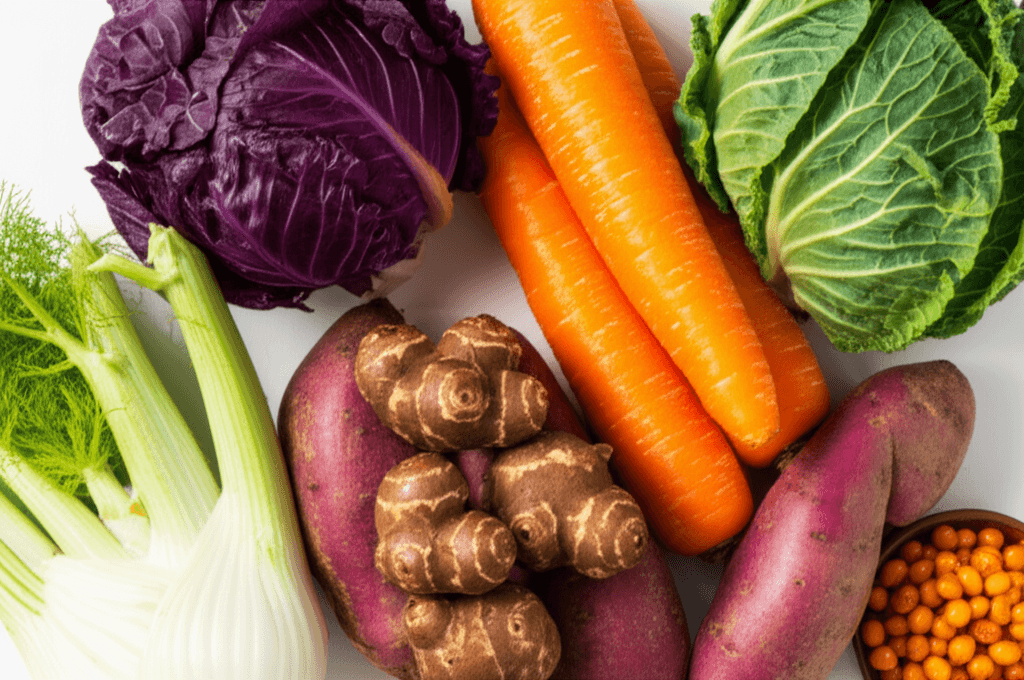
Unexpected Produce Powerhouses
Beyond the usual broccoli and carrots, a world of nutrient-dense vegetables and fruits awaits.
1. Kohlrabi
Often described as a “German turnip,” kohlrabi is a cruciferous vegetable related to cabbage and broccoli. Despite its alien-like appearance, it’s packed with Vitamin C, potassium, and fiber, supporting immune health, blood pressure, and digestion. Its crisp, mild flavor makes it excellent raw in salads or slaws, or roasted for a savory side.
2. Watercress
This small but mighty leafy green consistently ranks as a top “powerhouse” vegetable due to its exceptional nutrient density. Watercress is loaded with vitamins A, C, K, and a range of minerals, along with beneficial compounds that may help reduce inflammation and chronic disease risk. Its peppery kick adds a unique flavor to salads, sandwiches, or even smoothies.
3. Sunchokes (Jerusalem Artichokes)
These knobby root vegetables have a slightly sweet, nutty flavor and are an excellent source of prebiotics, particularly inulin, which supports gut health. Sunchokes are also rich in potassium, iron, and B vitamins. They can be roasted, mashed like potatoes, or added raw to salads for a satisfying crunch.
4. Celery
Often relegated to a mere dipping vehicle, celery is a surprisingly nutrient-rich stalk. It provides essential nutrients like vitamin K, potassium, folate, and a variety of antioxidants. Compounds in celery, such as phthalides and coumarins, have been linked to lower cholesterol and protection against certain cancers. Don’t discard the leaves; they can be blended into pesto or smoothies for an extra nutritional boost.
5. Jicama
This edible root vegetable, resembling a turnip, boasts a white, mildly sweet, and crunchy flesh. Jicama is an excellent source of vitamin C, crucial for immune health and acting as an antioxidant. It’s also high in fiber, including inulin, which is beneficial for gut health. Enjoy it raw with a squeeze of lime, or add it to salads for texture.
6. Frozen Green Peas
While often overlooked, humble frozen peas are nutritional powerhouses. They are rich in fiber, protein, vitamins C and K, iron, and zinc. Frozen peas can even contain more vitamin C than fresh peas, as they are typically frozen shortly after harvesting. They are also high in lutein and zeaxanthin, which are beneficial for eye health.
7. Cabbage
This unassuming cruciferous vegetable is incredibly versatile and nutritious. A cup of shredded raw cabbage is packed with vitamins C and K, folate, and fiber, all for very few calories. Cabbage can support digestion and provides antioxidants. It holds up well in the fridge and can be used raw in slaws, or cooked in stir-fries, soups, or roasted.
8. Cherimoya (Custard Apple)
Known for its creamy, sweet flesh that tastes like a blend of banana, pineapple, and strawberry, this tropical fruit is more than just a treat. Cherimoya is an excellent source of vitamin B6, which is linked to mood regulation and may help reduce the risk of depression. It’s also high in fiber, vitamins, and minerals, with anti-inflammatory and immune-boosting properties.
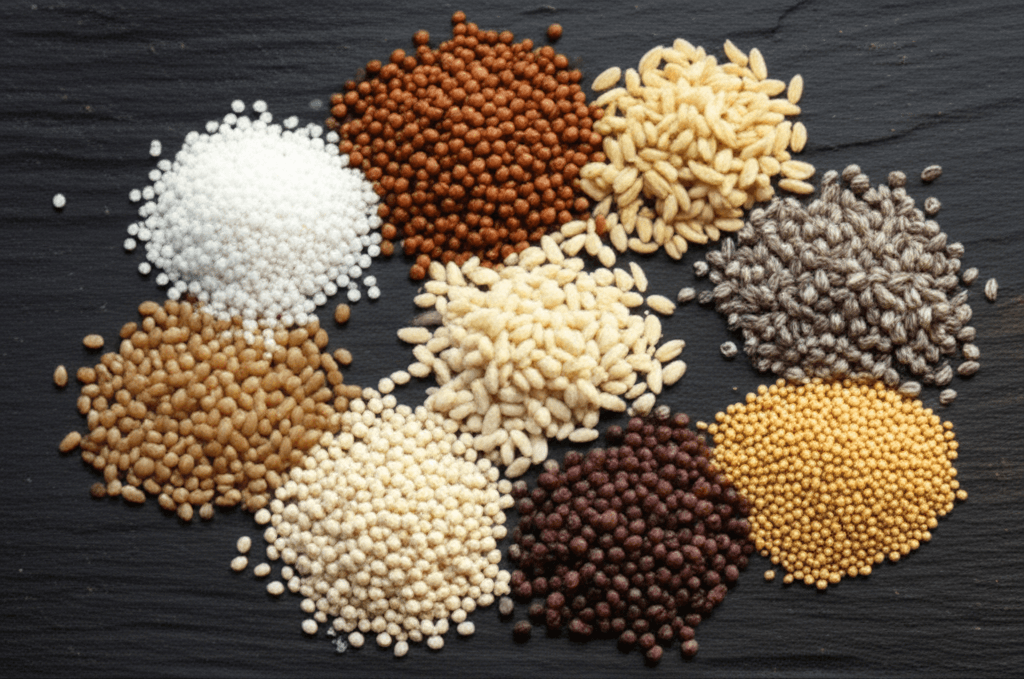
Grains Beyond the Ordinary
Expand your grain repertoire beyond rice and wheat for diverse nutrients.
9. Millet
Often thought of as birdseed, millet is a gluten-free ancient grain that has been a staple in many parts of the world for thousands of years. It’s an excellent source of protein, fiber, magnesium, phosphorus, and B vitamins. Millet is versatile enough to be cooked as a fluffy side dish, used in porridges, or even popped like popcorn.
10. Sorghum
This gluten-free whole grain is gaining recognition for its impressive nutritional profile. Sorghum is rich in fiber, protein, and antioxidants. It’s noted for its resistant starch content, which benefits gut health, and for containing more potassium than a banana and significantly more iron than spinach. Sorghum can be used in flours, as a grain, or even popped.
11. Barley
Chewy and nutty, barley is a highly fibrous whole grain that often gets overshadowed. It’s especially high in soluble fiber, which helps lower LDL (“bad”) cholesterol, and is rich in manganese, selenium, copper, and B vitamins. Barley also contains lignans, antioxidants linked to a lower risk of heart disease and certain cancers. It’s a great addition to soups, stews, or as a hearty side dish.
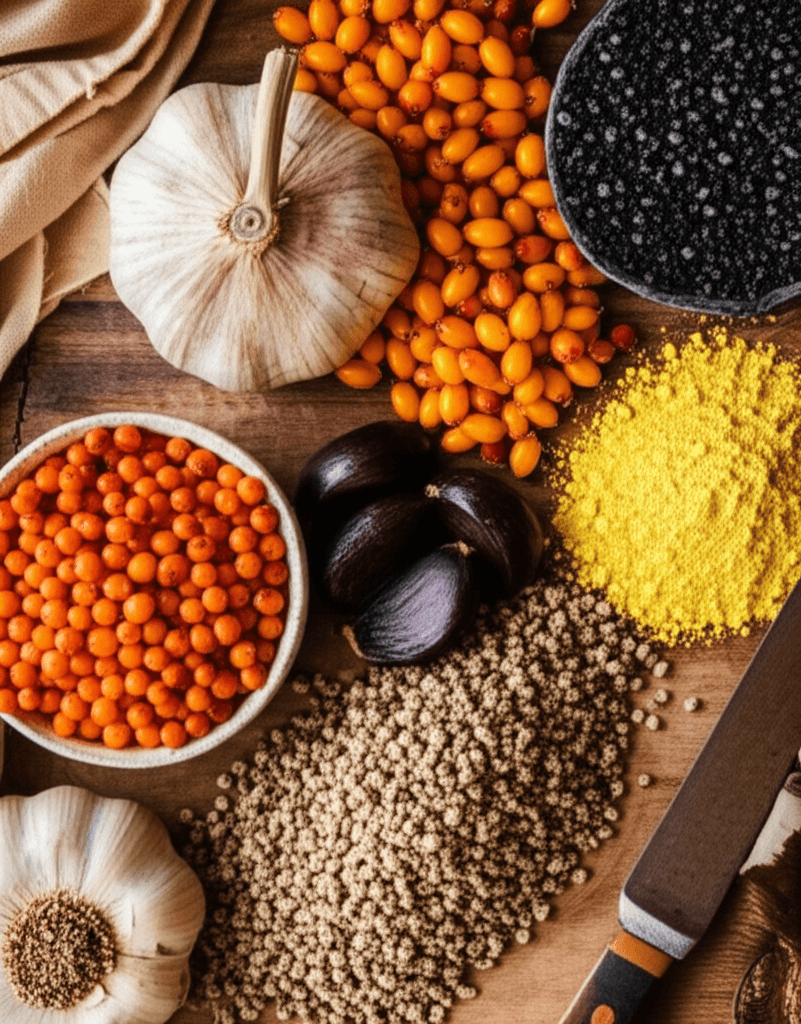
Protein & Micronutrient Powerhouses
These foods pack a punch beyond their common perception.
12. Lentils
These budget-friendly legumes are a nutritional powerhouse, loaded with protein and a hefty amount of fiber. Lentils are also rich in folate, potassium, iron, and various B vitamins. Their fiber content helps lower cholesterol and promotes gut health, while their protein contributes to satiety. Unlike many other legumes, lentils often don’t require pre-soaking, making them a quick and easy addition to meals.
13. Sardines
Don’t let their small size or canned presentation fool you; sardines are a nutritional goldmine. They are one of the richest sources of omega-3 fatty acids, crucial for heart and brain health, and are also among the few foods naturally high in vitamin D. Sardines provide significant amounts of protein, calcium, and vitamin B12, with lower mercury levels than larger fish.
14. Mussels
These bivalve mollusks are an incredibly rich source of low-calorie protein and are packed with essential nutrients. Mussels are full of omega-3s, and provide ample manganese and selenium, important for immunity, brain function, and metabolism. They have also been shown to help reduce joint inflammation.
15. Sauerkraut & Kimchi (Fermented Foods)
While their pungent aroma might deter some, fermented foods like sauerkraut and kimchi are champions of gut health. They introduce beneficial bacteria (probiotics) into your digestive system, aiding digestion and nutrient absorption. These fermented cabbage dishes are also good sources of vitamins and can contribute to a healthy microbiome, which is increasingly linked to overall well-being.
16. Black Garlic
Created by fermenting regular garlic, black garlic boasts a sweeter, milder flavor and a higher concentration of antioxidants. It retains the immune-boosting and anti-inflammatory properties of regular garlic, and its unique taste makes it a versatile ingredient in both savory and even some sweet dishes.
17. Moringa
Often called the “miracle tree,” moringa is a nutrient-dense plant, with its leaves being particularly beneficial. It’s packed with antioxidants, vitamins (including A, C, and B vitamins), and minerals, offering more protein than yogurt, more calcium than milk, and more potassium than bananas, per comparable weight. Moringa can be consumed as a powder in smoothies or teas.
18. Seaweed (Nori, Wakame, Kelp)
Common in Asian cuisines, various types of seaweed are incredibly nutritious yet often overlooked in Western diets. Seaweed is an excellent source of iodine (crucial for thyroid health), iron, calcium, and a variety of vitamins and minerals. It also contains unique bioactive compounds and beneficial fibers that can support gut health.
19. Prunes
Beyond their well-known role in aiding digestion, prunes (dried plums) offer a wealth of other health benefits. They are high in fiber and polyphenols, plant compounds that protect cells and decrease inflammation. Research suggests that eating prunes regularly can help slow bone loss and reduce the risk of fractures, especially in postmenopausal women. They also contribute to heart health.
By integrating these 19 underrated healthy foods into your diet, you can unlock a broader spectrum of nutrients, flavors, and health benefits that you might be missing out on. Experiment with them in your cooking, and you might discover new favorites that become staples in your healthy eating journey.




